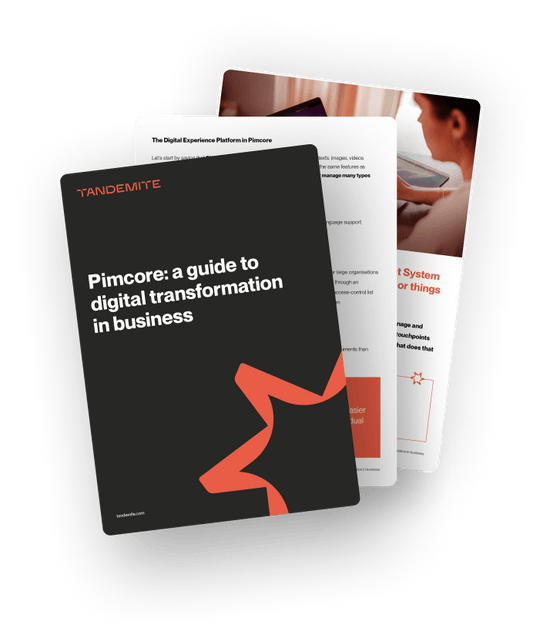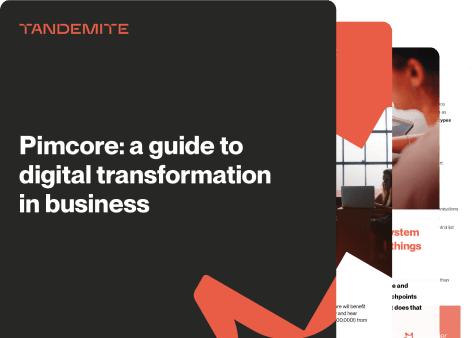Pimcore is emerging as one of the most capable solutions in enterprise data management. It consolidates your information into a secure, structured, and interconnected source.
In the economy of information, success isn’t measured by how much you gather, but by how effectively you manage it. More tools won’t help – you need smarter control of what you already use.
What is Pimcore?
Pimcore is an open, modular Digital Experience Platform, bringing together all the components of your product ecosystem. Its flexible architecture powers e-commerce in diverse setups, from local mid-market brands to global enterprises overseeing thousands of sites and massive data assets.
Over 118,000 B2C and B2B organizations are estimated to rely on Pimcore software. It’s the platform of choice for major enterprises, including leaders from the Fortune 500 list. The customer base features globally recognized names such as Audi, Pepsi, Carrefour, Burger King, Stanley Black & Decker, Gabor, and T-Mobile.
What does Pimcore offer?
Every great product deserves great data behind it. Pimcore gives your business the structure and clarity to present every item, image, and detail exactly as it should be – consistent, complete, and ready for any channel.
But Pimcore doesn’t stop at aggregating and managing product data. It’s a complete digital foundation. Its capabilities let you handle other critical business information with the same single-source clarity. Let’s take a look at everything it offers:
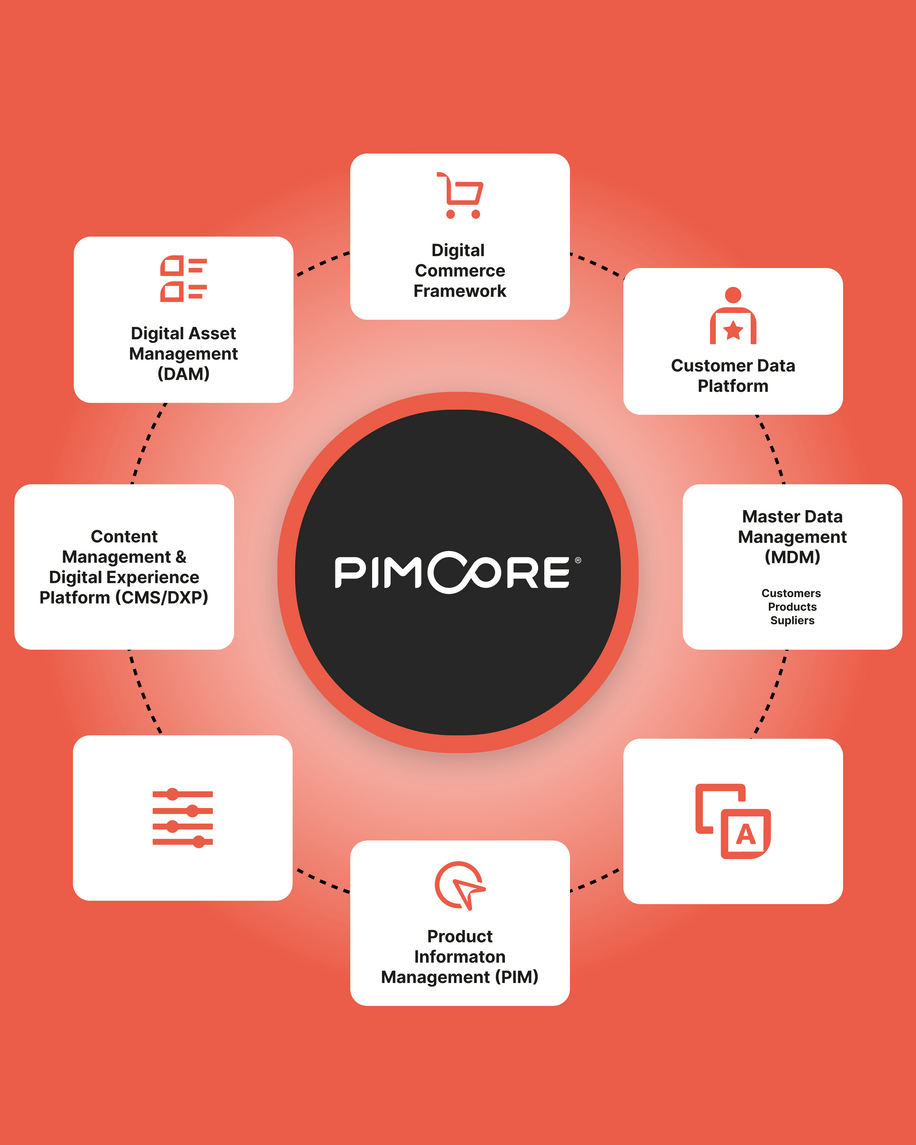
1️⃣ PIM module – Product Information Management
- Centralized SKUs, attributes, families, variants, bundles & kits. Pimcore’s flexible modeling lets you organize even the most layered structures. The result is clarity: a complete, accurate view of your entire offer.
- Single hub to collect, enrich, approve, and publish product data.
- Localization & channel-specific assortments.
- Bulk edits, validation rules, data quality & completeness scores, and approvals.
- Workflow-driven enrichment & collaboration.
- Multilingual, multi-currency, and channel-specific outputs.
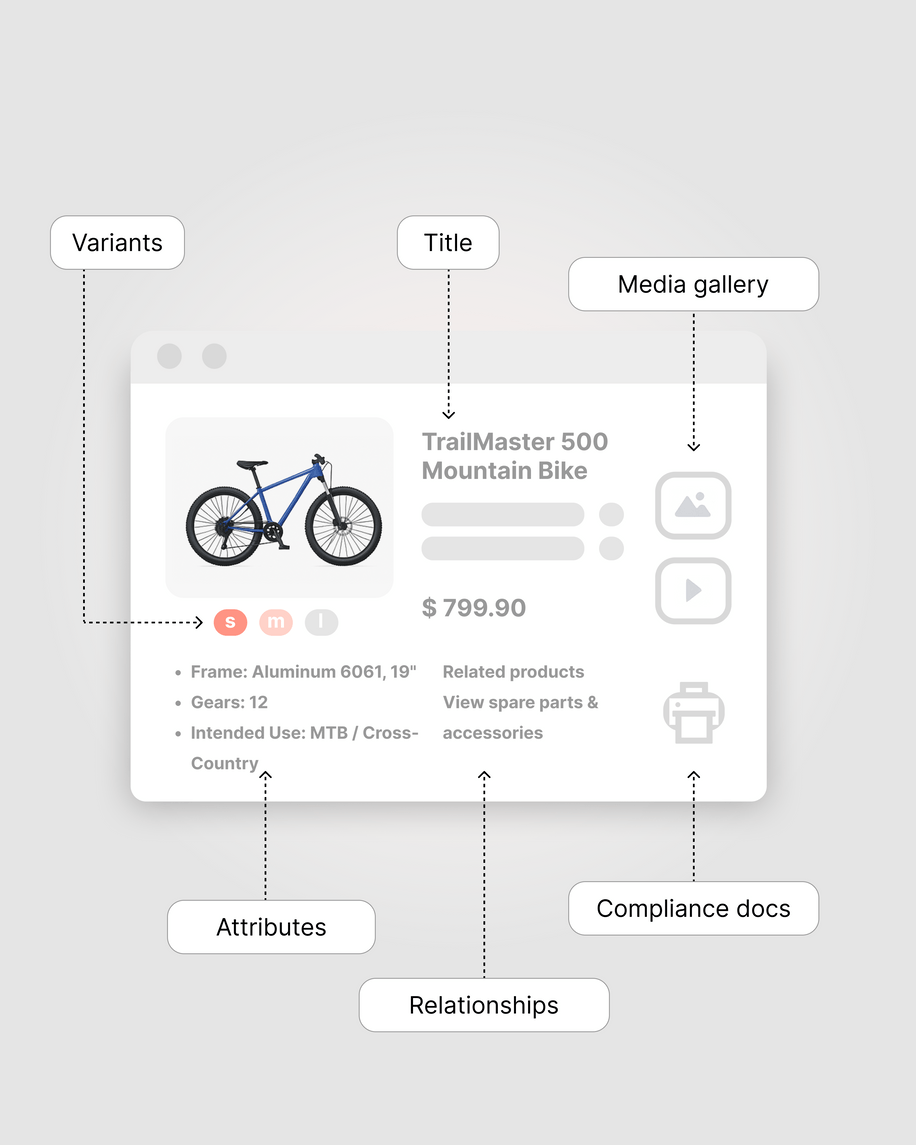
2️⃣ MDM module – Master Data Management
- Golden records for products, customers, suppliers, products, locations.
- Relationships, hierarchies, reference entities.
- Data stewardship, lineage, audit trails.
3️⃣ DAM module – Digital Asset Management
- Single source for image, audio, and video files, 3D & manuals. Pimcore makes them easy to manage and quick to find for anyone in your organization. Say goodbye to scattered image folders and mislabeled PDFs.
- Convenient data editor, containing such additions as image cropping, tagging, and metadata governance.
- Asset linking (directly to products), renditions, transformations, rights & expiration tracking. When your website or sales team needs an asset, it’s the correct, up-to-date version – and it’s retrieved in seconds.
- CDN-friendly delivery; connect to external DAMs if needed.
4️⃣ CMS/DXP – Content Management & Digital Experience Platform
- Page and experience management for web, portals, and microsites. Because the content (like product descriptions or blog posts) lives in the same place as your data and assets, you maintain consistency everywhere.
- Multisite, multilingual, multi-brand.
- Headless content delivery to any frontend.
- Personalization, A/B testing, dynamic content.
5️⃣ CDP – Customer Data Platform
- Unified, transparent customer profiles & segments, regardless of the scale of the business.
- Behavioral data capture and consent management.
- Real-time audiences for targeted campaigns and recommendations. Consolidating marketing databases lets you better manage and coordinate cooperation with partners and suppliers in multichannel campaigns.
6️⃣ Digital Commerce Framework
- Pricing, availability, assortments, and carts via services.
- Headless APIs to build B2B/B2C experiences.
7️⃣ Datahub & Integrations
- Exposes data via GraphQL/REST.
- Integration with ERP, OMS, CRM, marketing tools, marketplaces, payment/checkout stacks, and other third-party software. No more copy-pasting between systems or worrying that your online store and inventory system are out of sync.
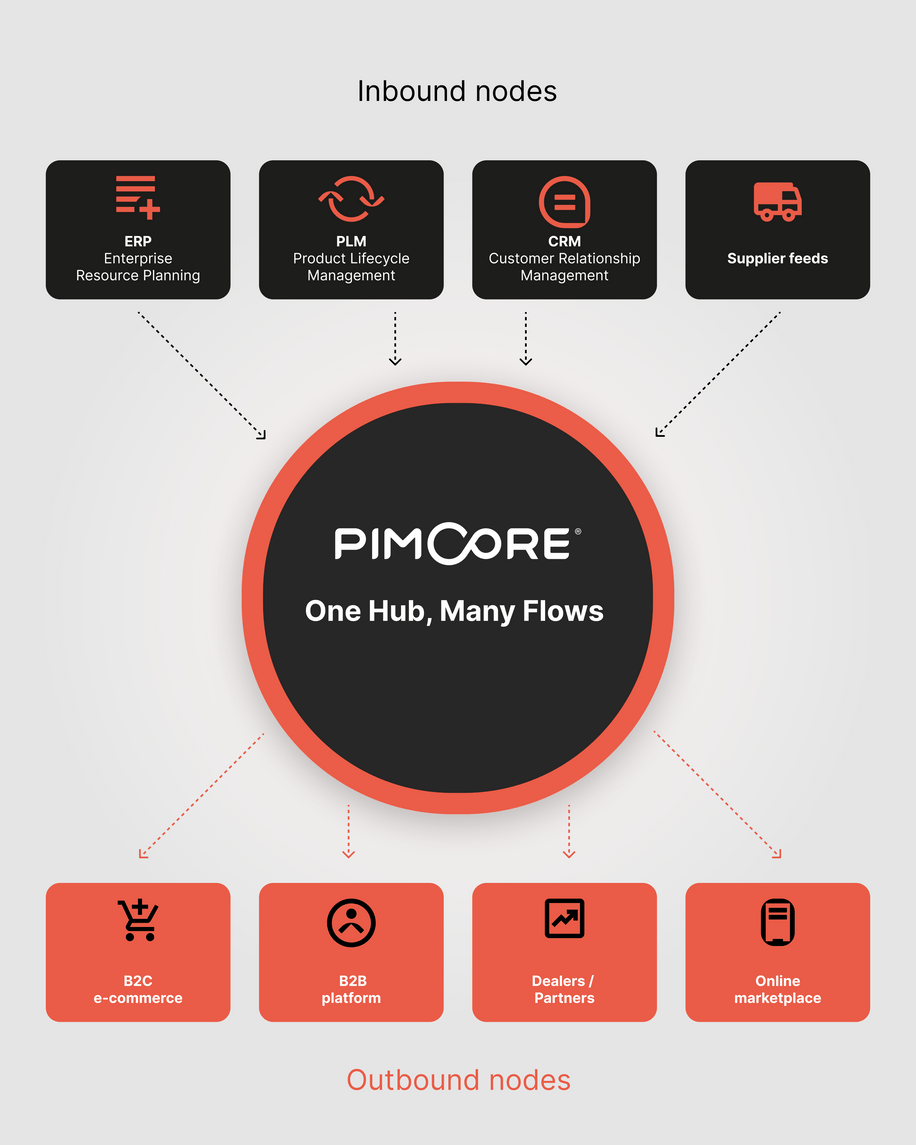
8️⃣ AI-assisted productivity (Copilot)
- Generates channel-ready, multilingual product descriptions and SEO copy.
- Classifies products and assets, tags images, and detects duplicates/variants.
- Orchestrates multi-step flows (import → normalize → validate → enrich → approve → publish) with human-in-the-loop control.
- Automates bulk updates and channel syndication, and keeps learning from your edits.
- Ingests supplier PDFs and semi-structured files (brochures, spec sheets, price lists, emails, XLS/CSV) with OCR and table extraction, then maps attributes to your taxonomy.
Keep in mind! Feature availability depends on the edition and setup. Want a capabilities deep-dive?
This means one flexible platform can store and organize everything from product details to images, videos, and even website content. Instead of adding more personnel to chase spreadsheets, Pimcore lets your existing team manage more products and channels with less effort.
Such a unified approach avoids costly integration and eliminates the need for separate systems.
The friction points you don’t have to live with (thanks to Pimcore)
❕ Data quality debt: Missing specs, duplicates, and conflicting edits are costing returns and support time. Bring in validations and completeness scoring to fix issues at the source.
❕ Asset volumes are growing fast: Images, 360s, videos, manuals, and files live everywhere? You need to automate renditions, manage rights/expiry, and reuse across channels.
❕ Supplier maze: Onboarding data from partners requires templates and automated mapping – before it contaminates your catalog.
❕ Governance or regulatory gap: Who changed what, and who approves it? You need staged workflows, roles, versioning, and checks to keep data complete and compliant.
❕ Catalog complexity keeps multiplying: Thousands of SKUs, heavy variant logic, deep attributes, configurable kits, spare‑parts hierarchies, and compatibility rules are hard to govern without a real PIM/MDM.
❕ Brand and region sprawl or frequent seasonal drops: Multiple brands and markets need different assortments, copy, currencies, and compliance notes – without duplicate effort.
❕ Channel explosion: New sites, apps, marketplaces, POS, and print demand consistent data models and repeatable exports, not one‑off scripts.
❕ Personalization ambition: If your business requires product/content context tied to customer segments, a CDP‑ready backbone makes it possible.
Seeing yourself here? Talk to us about your use case.
Who benefits from Pimcore? Who is it for?
One of the best indicators of Pimcore’s value is who’s using it and for what. Pimcore shines in industries where there’s a lot of product data or complexity – think of businesses with extensive catalogs, frequent product updates, or a need for rich product content:
Manufacturers
If you’re a manufacturer with thousands of parts or products, Pimcore helps you keep specifications, datasheets, and compliance documents organized and linked to the right item. When something changes (a component update, a new version), one update in Pimcore means every sales channel and data sheet is updated.
Core benefit: It reduces errors in specifications and ensures your retailers and distributors always have the latest info.
Distributors & wholesalers
Distributors often gather product info from dozens of suppliers and then redistribute it to various channels and clients. Pimcore allows you to consolidate all supplier data, standardize it, enrich it with marketing content, and then easily feed it into your e-commerce site or buyer portals. Stop wrestling with broken spreadsheets from every vendor – you get one clean, enriched catalog that you control.
Core benefit: It leads to faster onboarding of new products and fewer customer complaints about incorrect data.
B2B e-commerce & retail
For businesses selling online (whether B2B, B2C, or D2C), Pimcore ensures that your online store, mobile app, and even in-store kiosks are all pulling from the same rich pool of information. Want to launch a new region or language? Pimcore’s multilingual support and data inheritance make it straightforward – enter your translations or regional data once, and it’s live everywhere.
Plus, with Pimcore’s customer data capabilities, you can start personalizing product recommendations or content once you have the basics in place.
Core benefit: Time-to-market for new channels and products drops dramatically. You ensure rich content and fast assortment changes.
Global brands
If your strategy involves multiple marketplaces (Amazon, eBay, Alibaba) or omni-channel marketing, Pimcore acts as the control center. It can format, normalize, and send your product data according to each channel’s requirements, saving you from manually adjusting CSV files for each platform.
Core benefit: Consistency across channels means customers get the same great experience whether they find you on Google, on a partner site, or in your catalog. Pimcore software allows for multi-brand, multi-site, multi-region governance.
Companies seeking efficiency gains or embarking on a serious digital transformation
Ultimately, any organization that is currently struggling with data in multiple places, manual processes, or inconsistent content will see a huge benefit. By implementing Pimcore, one organization can free up their sales team from doing price list updates in Excel, while another business can use Pimcore to aggregate product info from 5 different legacy systems.
Core benefit: Launching the Pimcore platform results in internal efficiency that wasn’t possible before.
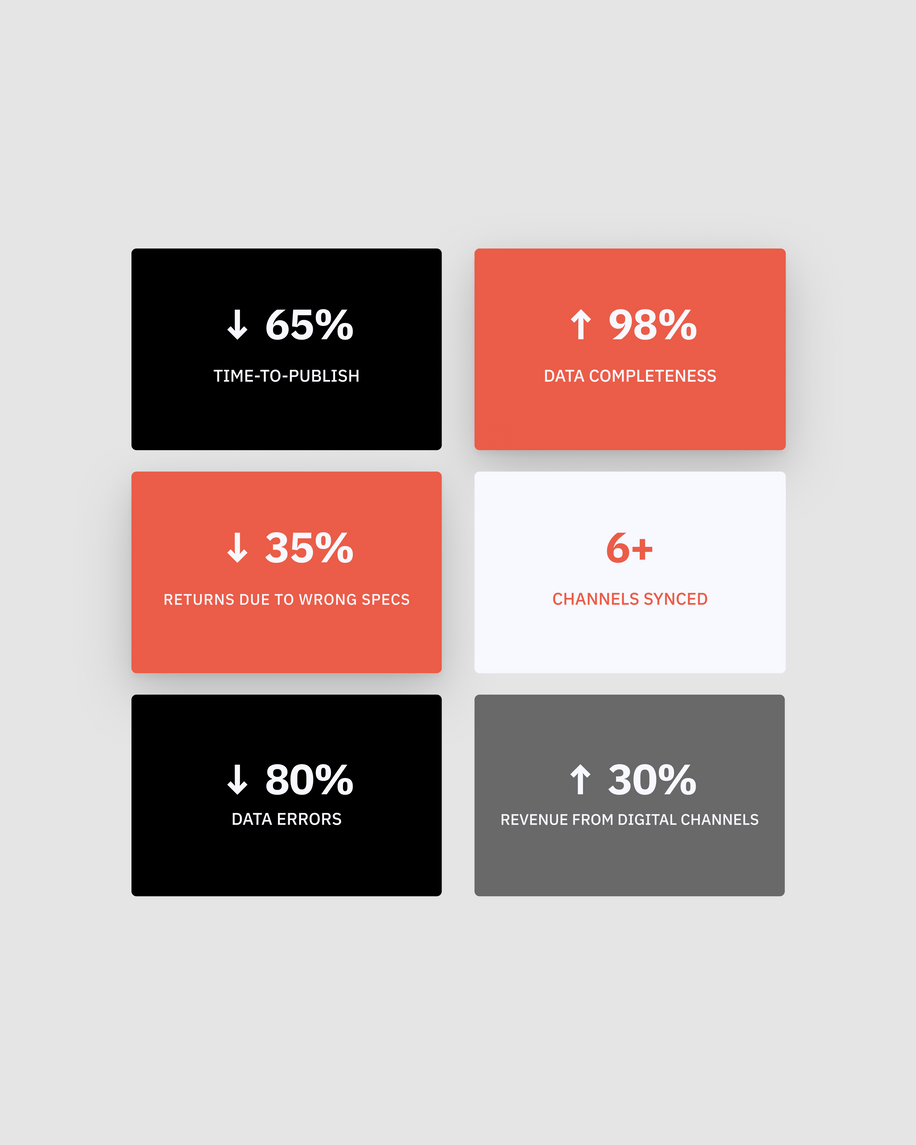
Why companies choose Pimcore – Strong proof points
➕ All-in-one platform, one data model. PIM + MDM + DAM + DXP/CMS (+ commerce tooling) in a single stack, so you cut vendor sprawl and keep one source of truth across products, content, and assets.
➕ Flexible by design for complex catalogs. Objects, attributes, variants, bundles, translations, validation rules, and workflows – modeled to fit your real business, not the other way around.
➕ Enterprise-grade governance & security. Fine-grained roles/permissions plus SSO and 2FA support – fit for global teams and compliance needs.
➕ Extensible on a proven foundation. Built on Symfony (MVC). You benefit from a massive ecosystem and can tailor Pimcore via bundles and custom controllers when you need to.
➕ GenAI where it actually helps. Pimcore Copilot speeds up enrichment: you can generate product copy, classify/tag assets, and orchestrate long-running jobs with a built-in execution engine.
➕ One product record, repeatable exports. Publish data to websites, apps, marketplaces, and share approved assets via brand portals to keep partners on-brand. Pimcore adapts to each channel’s rules. Every destination gets the format and attributes it needs – consistently.
➕ Performance at scale. Datahub’s Simple REST API can push metadata into Elasticsearch/OpenSearch so that when many users search or browse metadata, it stays fast and scalable, ideal for high-traffic front-ends.
➕ Cloud when you want it. Enterprise PaaS offers managed operations (24/7), multi-cloud choice, and a streamlined developer experience, without giving up flexibility.
➕ Clear edition paths & LTS. Start where you are (Community/Professional), then move to Enterprise or PaaS for advanced features, support, and long-term support options as you grow.
➕ Up-to-date and evolving. Active documentation and feature development (e.g., Datahub improvements, Copilot) keep the platform current with modern delivery patterns.
➕ Trusted globally. Pimcore reports wide adoption and industry recognition.
We are a Pimcore development company and a partner in digital transformation
Pimcore provides a unified hub for all critical business data, improving accessibility, accuracy, and usability. Still, technology by itself won’t fix your problems – the right plan and execution will. Guided by Tandemite, your organization can realize Pimcore’s full value.
KPIs we commit to:
- Time to publish new SKU ↓
- Enrichment completeness ↑
- Catalog error rate ↓
- Reuse rate of assets ↑
- Lead time for market localization ↓
- Return rate due to wrong info ↓
We understand that at the foundation of any business is a solution to a customer’s need. So instead of drowning you in tech jargon or endless meetings, we get straight to identifying where Pimcore and other digital tools can make a real difference. Your business goals set the route. Every stage is methodical and aimed at easing your pain points.
Your plans deserve a good conversation. Whether it’s a quick exchange or a deep dive, we’re here to listen, brainstorm, and enjoy a few coffees along the way.
You often ask
Is Pimcore still open source in 2025?
Short answer: the model changed. From Platform version 2025.1, the Community Edition moved from GPLv3 to the Pimcore Open Core License (POCL). It’s still freely available, but POCL limits certain commercial use; many businesses now choose Professional or Enterprise for production. Read more about the changes.
Community vs Professional vs Enterprise – which fits us?
- Community (POCL): good for learning, nonprofits/academia, and small organizations under a revenue cap.
- Professional: commercial use with core PIM/MDM/DAM + DXP and access to Store; suited to growing teams.
- Enterprise / Enterprise PaaS: full feature set, LTS/SLAs, DirectConnect support, and optional managed cloud ops.
Not sure which edition fits? Talk to us about licensing to fit your roadmap and risk profile.
How do we host it: on-premise or cloud?
Both. Many enterprises pick Enterprise PaaS for managed operations, multi-cloud flexibility, and 24/7 support; others run self-hosted in their own cloud or on-prem. You can decide what fits your IT playbook best.
How risky is migration from spreadsheets or another PIM?
Risk lives in data quality and integration, not the platform. We de-risk by auditing attributes/taxonomy, cleaning data before import, piloting one product category/one channel, then scaling.
What about AI for product content and operations?
Pimcore’s Copilot adds AI-assisted actions (e.g., generating product copy, tagging/classifying assets) and a job execution engine for long-running tasks. You keep human control; AI handles the busywork.
Where does Pimcore shine for manufacturers & distributors?
- Rich technical attributes and variants
- Associations (spares, compatibles, accessories) that buyers actually use
- Rules for data hygiene at scale (units, ranges, mandatory sets)
- Activation (syndication) to many channels without bespoke projects
- Locales for real multi-country operations (copy, compliance, media)
- Ecosystem of connectors to speed integration
Why Pimcore (and not another PIM)?
Most PIMs manage product fields. Pimcore redefines that. It’s built as a best-of-suite platform, combining PIM, MDM, DAM, DXP, and eCommerce in one ecosystem. The results are fewer tools to buy, connect, and maintain, less complexity, and faster delivery.
You can start small and grow naturally, adding features and modules when you need them.
With consistent releases improving performance, UX, and AI, Pimcore remains robust, extensible, and enterprise-ready.
Bottom line: If you need a product catalog tool, any PIM platform might do. If you want a central engine for data, assets, and content that is API-ready, secure, and built to scale, Pimcore PIM is the safer long-term bet.
Explore the differences between Akeneo and Pimcore software.





